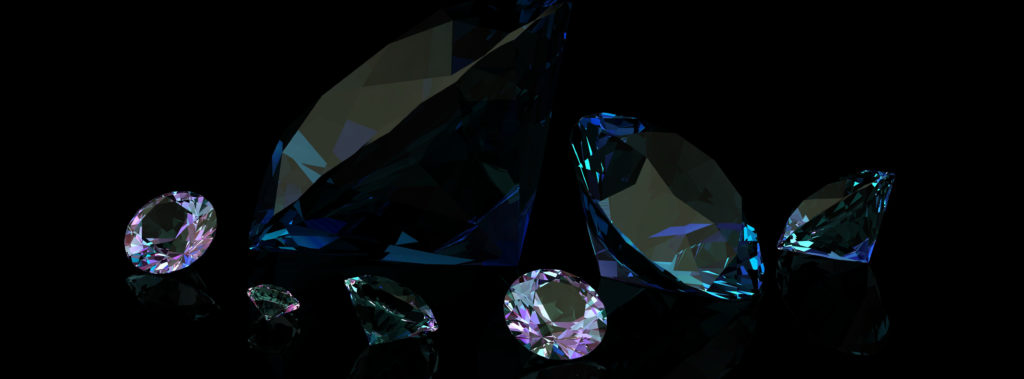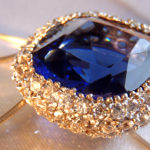Quality features
Contents
Gems are stones that are rare, durable and, above all, beautiful. Beauty, however, is known to be in the eye of the beholder and therefore can not be used as an objective criterion for determining a gem’s value.
Most gems, with the exception of Diamonds, can not be classed easily. Only their weight can be measured precisely and quantified in carats. The quality features, the value and the cost depend on various factors that help to determine the value of gemstones. When regarding colored gemstones, the color quality is particularly decisive.

Quality features of gemstones
The valuation of gemstones is primarily a matter of experience. Gemologists check the stones for 4 quality features. Within these categories for evaluation, even the finest details and nuances can have a decisive effect on the gemstone price.
The four C’s are used as a rule of thumb. These C’s stand for the terms:
- C arat
- C olor
- C ut
- C larity
While all 4 categories in regarding Diamonds are weighted equally, the most important thing about gemstones and colored Diamonds is the color, as this is their most remarkable feature.
In determining the quality of gemstones these factors are also important:
- Occurrence and rarity
- Synthetic or natural
- Mohs hardness
Carat (weight) for gemstones
The weight of gemstones is given in carats. The metric carat is the unit of gem mass.
Among the most expensive diamonds is a diamond that weighs about 19 carats – it sold for $ 13.53 million. The heaviest diamond found in the last 100 years is a 1111 carat gem.
Although the carat is not an SI unit, this unit is legally recognized in Switzerland and the US. The carat abbreviation is “ct “.
The weight of a gem can be measured using an ordinary kitchen scale or a more sensitive letter scale.
Cut and form
The cut of a gem is a true art. Every jewel that now shines colorfully was once an unassuming rough stone. Only through elaborate grinding with sensitivity, patience and great care, the impressive colors and light effects come about. Therefore, it is not surprising that the cut and form are crucial for the value of a gemstone.

Purity and inclusions
Gems can be transparent, translucent or completely opaque. They may also have impurities, or inclusions.
Basically, a gem is more valuable if it is untainted, with minimal to no impurities. However, there are also gems that are unique and therefore more valuable because of their inclusions.

Rarity and occurrence
The rarer a gem is, the higher its value. While Quartz stones are the most common gems worldwide, Tanzanite is one of the rarest gemstones. The rarity refers to the number of localities and of course the number of pieces that could be found so far.
Synthetic or natural?
Frequently, the supposed gemstones are not natural but synthetic ones. What the advantages and disadvantages of synthetic gemstones are, how to differentiate them from natural ones, and other important information can be found in our guide on synthetic gemstones.

Value and price
In addition to the 4 important quality characteristics of gemstones, the following factors can also be important for value and price:
Hardness (Mohs hardness)

Previously, the hardness of a gemstone played a significant role in determining the price. Even today it is a central deciding factor. The degree of hardness is also referred to as Mohs hardness and ranges from 1 to 10.
The Diamond is the toughest known gemstone with a Mohs hardness of 10. A Diamond can therefore theoretically scratch all other gems, but is itself virtually indestructible. It is not surprising that the Diamond is so valuable.
Rubies and Sapphires are Corundum, which is the hardest of all colored gemstones with a Mohs hardness of 9. This is followed by the Topaz with a rating of 8. Accordingly, the Diamond can scratch the Corundum and the Topaz the Corundum.
Overpriced or appropriate?
Buying gems and gemstone jewelry requires quite a bit of consideration. Especially if you are buying gems online, caution should be taken. For what you should look out for to find out if the price is reasonable or overpriced, check out our Buying guide .
Further guides
- How much do precious stones cost?
- Gems buying guide
- Synthetic vs. natural
- Why are gems so valuable?
- What gems are there?
